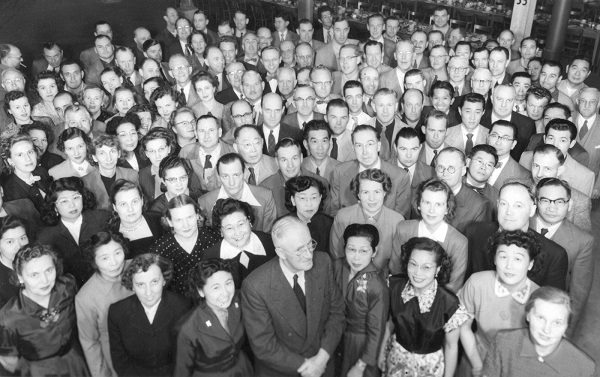‘The Paradox of Seabrook Farms’: Film screening, discussion to focus on plight of multi-cultural laborers at historic NJ vegetable farming operation
‘The Paradox of Seabrook Farms’: Film screening, discussion to focus on plight of multi-cultural laborers at historic NJ vegetable farming operation

The biggest industrial vegetable producer in the United States in the 1950s, Cumberland County’s Seabrook Farms employed 4,000 refugees and immigrants, including approximately 2,500 Japanese Americans interned during World War II.
The stories of those laborers are highlighted in “The Paradox of Seabrook Farms - Shattered Dreams, Restored Hopes,” a documentary directed and produced by filmmaker Helga Merits of Merits Productions.
Rowan University’s College of Humanities & Social Sciences, in partnership with the Seabrook Educational and Cultural Center, will present a screening of the film on Thursday, Sept. 26, at 6:30 p.m. in the Eynon Ballroom of the Chamberlain Student Center, 201 Mullica Hill Road, Glassboro, N.J.
The screening will be followed by a panel discussion featuring Merits, former Seabrook residents, activists and others involved with the film. CHSS Dean Nawal Ammar will moderate the discussion, which will begin at 8 p.m.
The event is free and open to the public, but online registration is required.
More than 4,000 laborers from a host of nationalities and cultures at Seabrook Farms built new lives for their families while C.F. Seabrook, known at the time as “the Henry Ford of Agriculture,” worked to destroy the company.
Seabrook laborers included men and women who worked grueling rotating seven-day shifts while still finding time to maintain their cultural traditions and create new possibilities for their children.
“The Paradox of Seabrook Farms” sheds light on the questions of how workers were able to cope and avoid bitterness and anger as Seabrook, the wealthy founder and farm owner, allowed jealousy and distrust to drive the family and company apart. Despite the challenges faced by the laborers, a vibrant, multicultural community was established at Seabrook, according to the filmmaker.
The true-life stories of survival and perseverance by Seabrook workers are at the heart of the 86-minute film, reflecting struggles for freedom from war and oppression experienced by those in today’s global headlines. In addition to Japanese Americans, laborers at Seabrook included, among others, Latvian and Estonian refugees and Black families who fled the Jim Crow South.
“This happened 70 years ago, but these kinds of situations in the agricultural sector are still happening,” Merits says. “I wanted to capture the ways the workers were able to cope and give their children a happy childhood, despite the traumas, the injustices done to them, their losses and their grief.”
The event is cosponsored by a number of groups at Rowan, including: the Departments of History, Political Science & Economics, Journalism, and World Languages; programs in international studies, Asian studies and American studies; the Student History Association; the Phi Alpha Theta History Honor Society; and the Rowan Center for the Study of Holocaust, Genocide, and Human Rights.
For information on the film screening and panel discussion, contact Stephen Fleming, flemings@rowan.edu.